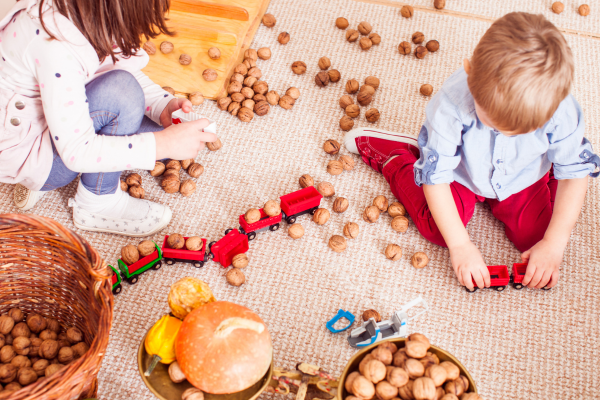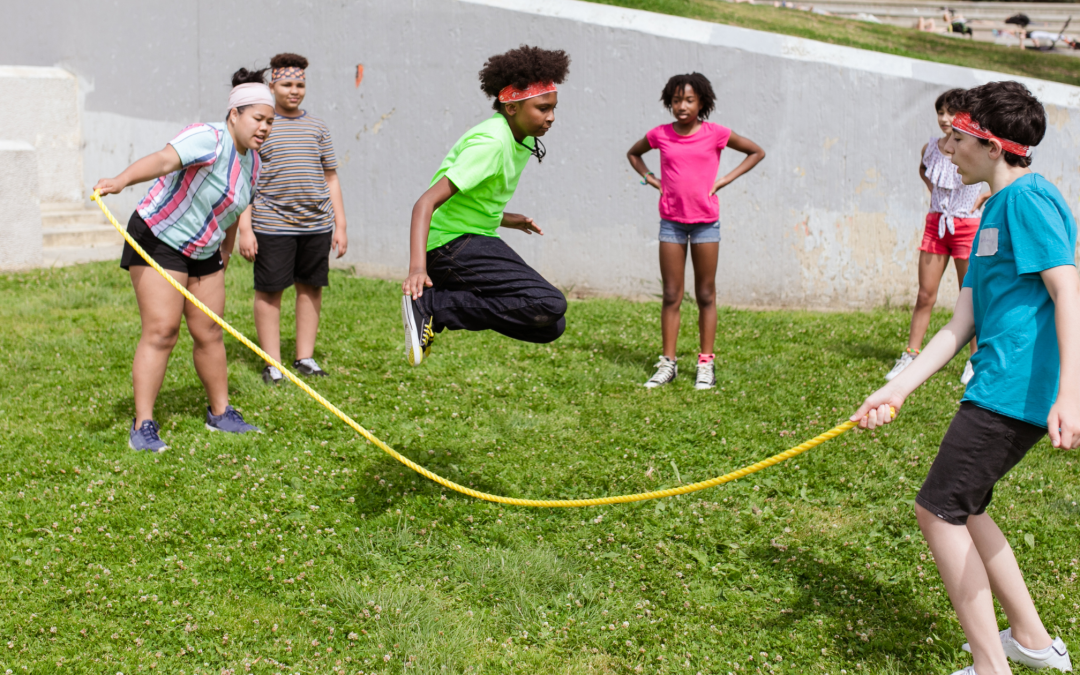
If you want your children to be more successful, give them more time for unstructured play. That’s the conclusion the American Academy of Pediatrics (AAP) and many other experts reached. In fact, the AAP recommends that kids get at least an hour a day to play outside, along with regular breaks throughout the day.
Are your kids getting enough unstructured play?
I have noticed that many parents need help resisting the temptation to interfere or direct unstructured playtime.
Let your kids play by themselves because, let’s face it, kids are the masters of their own play universe. It’s like trying to navigate a spaceship without a manual – just let them take the wheel! When parents hover or impose their ideas on the unstructured play, it’s like a giant meteor crashing into the magic of imagination. Trust me, kids have an uncanny ability to transform a cardboard box into a time-traveling spaceship or a humble stick into a mystical wand.
The activities that your children invent for themselves have a dramatic and unique impact on their social, emotional, and cognitive development.

So, parents, take a step back, resist the urge to control the play script, and let your little Einsteins, Picassos, and superheroes shape their extraordinary playtime adventures. You might be surprised at the ingenious castles they build or the wild jungle they create in the living room. Unstructured play is their domain, and by giving them the freedom to reign, you’re unleashing their creativity and nurturing their genius.
Benefits of Unstructured Play

Stimulate creativity
Children naturally engage in imaginative and creative activities When they are free to play without predetermined outcomes or instructions. Put your child’s imagination to work. Innovative thinking will help your kids excel in their future careers and develop enriching hobbies. For example, creating storylines for tea parties could help them break into advertising. A cardboard box into a spaceship may encourage them to become a pilot or investigate science.
Teach conflict resolution
When children engage in unstructured play, they have the opportunity to interact and collaborate with their peers. They learn to negotiate, take turns, share resources, and resolve conflicts independently. They ponder ethical decisions and explore how to treat people fairly. Unstructured play encourages the development of empathy, communication skills, and cooperation. For example, children playing in a sandbox might collaborate to build a sandcastle, each contributing their ideas and working together towards a common goal.
Manage stress
Intensive study camps and nonstop playdates can be too much of a good thing. Kids need a break from external pressures, just like adults do. Unstructured play provides an opportunity for children to unwind, relax, and relieve stress. Playtime allows children to engage in activities purely for enjoyment, which helps them reduce anxiety and tension. Whether building with blocks, playing with dolls, or engaging in imaginative scenarios, unstructured play is a stress buster, promoting emotional well-being and relaxation.
Strengthen motor skills
It may be difficult to explain fine motor skills to a toddler. However, unstructured play supports the development of children’s motor skills, coordination, and overall physical well-being. Activities like running, climbing, jumping, and swinging stimulate gross motor skills. In contrast, smaller-scale activities like drawing, painting, and playing with small objects enhance fine motor skills. By engaging in unstructured play, children improve their strength, balance, and agility, contributing to their overall physical development. On the other hand, they’ll love sorting pebbles and shaping cookie dough.

Develop self-awareness, self-regulation, and independence
Childhood is a time to create a sense of identity and figure out what we like and dislike. Taking charge of their free time helps kids to appreciate themselves and become more resilient.
In unstructured play, children have the freedom to explore their interests and make decisions on their own. They learn to manage their time, set goals, and engage in activities that captivate their attention. This fosters a sense of autonomy, self-regulation, and independence. Children develop an understanding of agency and self-determination by deciding what to play and how to play.
Fight obesity
Sedentary lifestyles can start young. Shooting hoops or roller skating after school burns calories. Best of all, those healthy exercise habits will stick with your children as they get older.
Enhance problem-solving
Building a fort from scratch can bring out the engineer in your child. During unstructured play, children encounter various challenges and problems that require them to think critically and find solutions. As a result, they learn to make decisions, experiment with different approaches, and adapt their strategies. Whether building a complex block structure or devising rules for an invented game, children develop problem-solving skills that transfer to real-life situations.
Emotional Regulation and Self-Expression
Unstructured play offers a safe space for children to express and manage their emotions. Through play, children can act out and process emotions like joy, anger, fear, or sadness. In addition, they may engage in dramatic play, taking on different roles and experimenting with different emotional responses. For instance, a child playing with dolls might enact scenarios that help them understand and navigate complex emotions.
Strategies to Provide Your Kids with More
Unstructured Playtime
Head outdoors
Spending time outdoors provides children with ample opportunities for unstructured play. Encourage them to explore nature, engage in physical activities like running, jumping, or climbing, or create imaginative scenarios in outdoor settings. Nature offers a rich and stimulating environment for unstructured play. Visit your local park. Hang a tire swing in your backyard. Keep a trunk full of Frisbees, jump ropes, and hula hoops on your porch.
Redecorate your child’s room.
Encourage children to engage in independent play by providing them with age-appropriate toys, games, or materials they can explore independently. This fosters self-directed learning, decision-making, and creativity. Offer support and guidance when needed, but allow them to lead their play. Design your child’s bedroom to incorporate multiple play areas. For example, you might want to arrange a table and chairs for crafts and reading. Set up an easel for sketching. Paint a hopscotch diagram on the floor.
Choose simple toys. Cardboard boxes and wooden blocks require your children to rely on their own resources rather than following the directions that come with a kit.
Put the money you save into their college account.
Be a Playful Role Model
Show enthusiasm and join your children in their play. Be present, actively engage, and demonstrate a playful attitude. This strengthens the parent-child bond and encourages children to immerse themselves fully in unstructured play.
Connect with Other Parents
Arrange playdates or join parent groups where unstructured play is encouraged. Children can benefit from playing with peers, exchanging ideas, and collaborating on imaginative play scenarios. It also allows parents to share ideas and experiences related to unstructured play.
Check school programs
Many schools have cut back on recess. Talk with your child’s teacher about policies at your school. Are they getting regular breaks during the day?
Encourage experimentation
Expose your children to a wide variety of activities. They’ll be better positioned to discover their true passions if they try out ice skating, dancing, and art rather than specializing too soon.
Create a Safe and Stimulating Environment
Set up a designated play area at home where children can freely explore and engage in open-ended play. Ensure that the space is safe, well-organized, and stocked with various age-appropriate toys, art supplies, and materials that encourage imaginative play.
Allow for Uninterrupted Play
Set aside blocks of time when children can engage in unstructured play without interruptions or distractions. Avoid over-scheduling their day with structured activities, and instead, provide them with opportunities to initiate and explore their own play ideas.
Set limits on screen time
Reduce children’s time in front of screens, such as television, video games, or smartphones. Excessive screen time can hinder unstructured play and limit creativity. Set reasonable limits and encourage alternative activities that foster imaginative and active play. Pediatricians recommend two hours or less a day of TV and computer time. Set a curfew on electronics and monitor your child’s activities online.

Embrace Messy Play
Embrace activities that may be messy but promote creativity and sensory exploration. Activities like painting, clay modeling, water play, or building with sand allow children to engage their senses, express themselves, and experience a range of textures and materials.


Balance Structure and Unstructured Play
While unstructured play is essential, finding a balance between structured activities and unstructured play is vital. Structured activities like music classes, sports, or art lessons can also contribute to a child’s development. The key is to ensure that there is ample time for unstructured play alongside structured activities.
Remember, each child is unique, and their play preferences may vary. Observe your child’s interests, provide them with the necessary resources and support, and allow them to explore and create in their own way. By prioritizing unstructured play, parents can help their children develop essential skills and experiences that will benefit them throughout their lives.
The virtues stimulated with unstructured play include; creativity, confidence, cooperation, flexibility, friendliness, purposefulness, resilience, self-discipline, determination, simplicity, fairness, openness, and wonder. Which virtue do you want your child to develop further?

